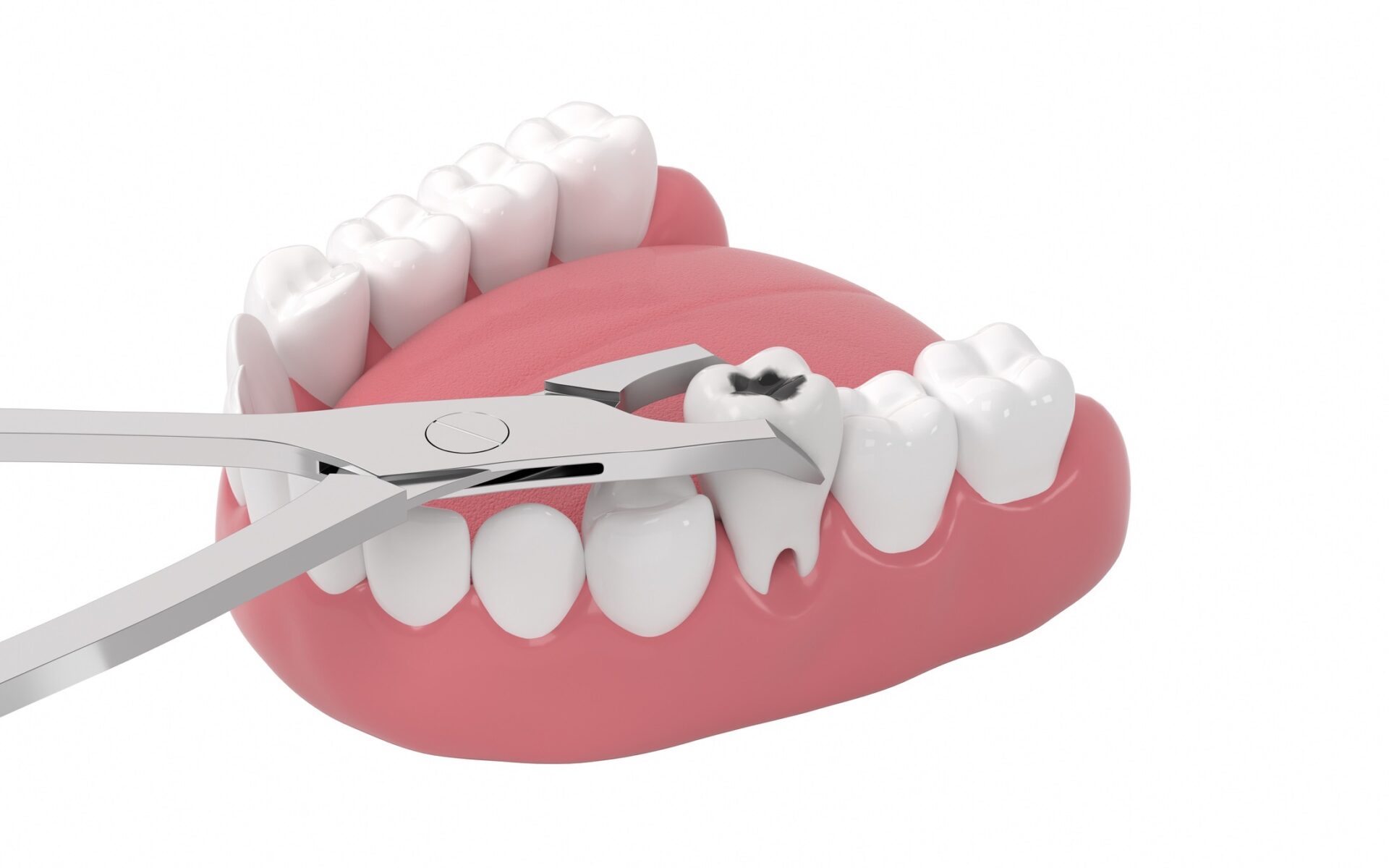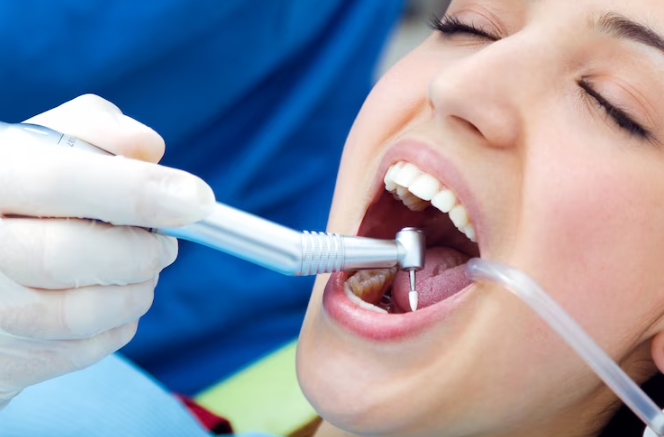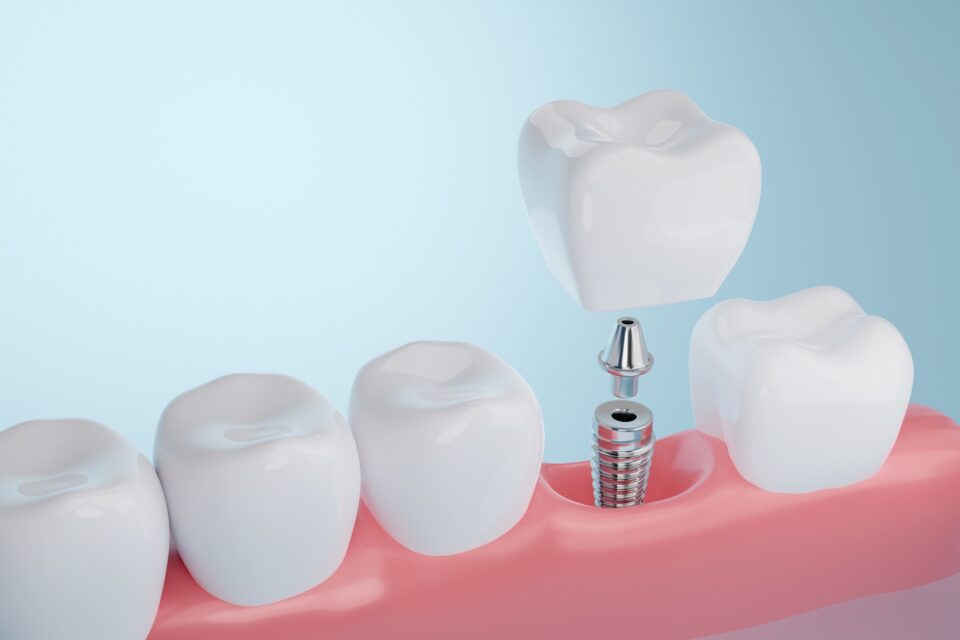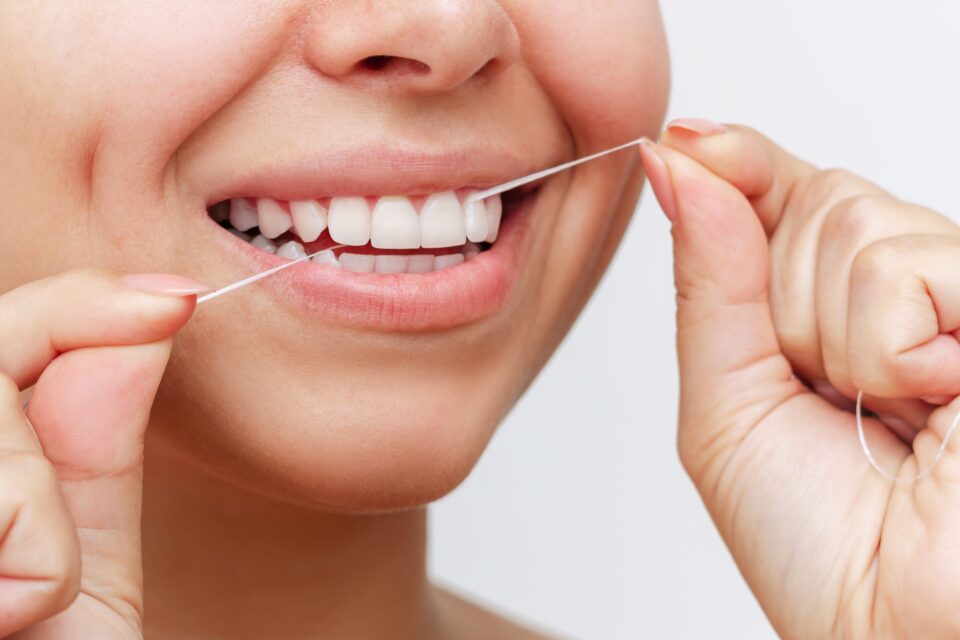Tooth Extraction Pompano Beach FL | JB Dentistry
Jaline Boccuzzi, DMD, AAACD Is Your Trusted Tooth Extraction Dentist in Pompano Beach FL
Gentle and expert tooth extractions. Our skilled dentist ensure a painless experience for the removal of problematic teeth.

what is a tooth extraction?
A tooth extraction is a procedure that involves the removal of a damaged, decayed, or infected tooth. This may be necessary if it prevents other teeth from growing properly or has developed an abscess. It can also be done to remove wisdom teeth that are impacted and cause pain or discomfort. The most common type of extraction performed in dentistry is a simple extraction. This involves using a tool to loosen and remove the tooth with forceps. In some cases, surgery may be necessary to perform more complicated extractions.
Jaline Boccuzzi, DMD, AAACD DMD has years of experience providing tooth extraction services to the people of Pompano Beach, FL. We understand that it can be a stressful process for some patients, and we strive to ensure they are comfortable and well cared for during their appointment with us. Our team is highly trained in all aspects of the removal process and will take the time to explain each step so that you feel informed and in control.
reasons for tooth extraction
- Severe Tooth Decay: When tooth decay reaches an advanced stage and compromises the tooth’s structure, extraction may be necessary to prevent further damage to neighboring teeth and to preserve oral health.
- Impacted Wisdom Teeth: Wisdom teeth, also known as third molars, often don’t have enough space to emerge or develop properly and fully. This can lead to pain, infections, crowding, and other dental issues, requiring their removal.
- Periodontal Disease: Advanced gum disease can cause teeth to become loose due to the destruction of supporting tissues and bone. In some cases, extraction is necessary to eliminate infection and prevent the spread of bacteria.
- Dental Trauma: If a tooth is severely fractured, broken, or knocked out due to an accident or injury, extraction may be necessary. Dentists will sometimes attempt to save the tooth through other procedures, but extraction may be the only option if the damage is too extensive.
- Overcrowding: In cases where the mouth is overcrowded, tooth extraction may be necessary to create space for orthodontic treatment, such as braces, to align the teeth properly.
- Orthodontic Treatment: Sometimes, extraction is part of an orthodontic treatment plan. Removing certain teeth can help create space and improve the alignment of the remaining teeth.
- Impacted or Infected Teeth: If a tooth is impacted (unable to erupt through the gum) or becomes infected, extraction may be necessary to alleviate pain, prevent the spread of infection, and maintain oral health.
It’s important to note that tooth extraction is a last resort, and dentists will usually explore other treatment options to preserve natural teeth whenever possible. The specific reason for extraction will depend on the individual case and the dentist’s or oral surgeon’s professional judgment of the dentist or oral surgeon.
At Jaline Boccuzzi, DMD, AAACD, our team of knowledgeable and experienced dentists will be happy to assist you.
how to prevent a tooth extraction
- Maintain a Consistent Oral Hygiene Routine: Brush your teeth at least twice daily using a soft-bristled toothbrush and fluoride toothpaste. Don’t forget to clean your tongue and gums as well. Additionally, floss daily to remove plaque and food particles between your teeth.
- Visit Your Dentist Regularly: Schedule regular dental check-ups and cleanings every six months or as your dentist recommends. These visits allow your dentist to identify potential issues early on and provide necessary treatments to prevent tooth extraction. At Jaline Boccuzzi, DMD, AAACD, our team is always here to provide unparalleled dental services.
- Address Tooth Decay Promptly: If you notice any signs of tooth decay, such as tooth sensitivity, pain, or discoloration, seek dental care immediately. Early intervention through fillings, root canals, or other treatments can prevent decay from progressing to where extraction is necessary.
- Practice a Tooth-Friendly Diet: Limit consumption of sugary foods and drinks, as they can contribute to tooth decay. Instead, choose a balanced diet of fruits, vegetables, lean proteins, and dairy products. Calcium and phosphorus-rich foods can help strengthen your teeth.
- Wear a Mouthguard during Sports: Wear a custom-fitted mouthguard if you participate in contact sports or activities that risk dental injuries. This protective gear can help prevent tooth fractures and avulsion (complete tooth loss) due to trauma.
- Address Gum Disease Early: Gum disease can lead to tooth loss if left untreated. Practice good oral hygiene to prevent gum disease, and if you notice any signs of gum inflammation, bleeding, or persistent bad breath, consult your dentist for appropriate treatment.
- Consider Orthodontic Treatment: If you have misaligned teeth or a crowded mouth, consult an orthodontist for evaluation. Correcting these issues through orthodontic treatment can alleviate the need for tooth extraction and improve your overall oral health.
- Avoid Tobacco and Limit Alcohol Consumption: Smoking and tobacco use increase the risk of gum disease and tooth loss. Additionally, excessive alcohol consumption can contribute to oral health problems. By avoiding or limiting these habits, you can reduce the likelihood of needing a tooth extraction.
types of tooth extractions
There are two main types of tooth extractions: simple extractions and surgical extractions. The type of extraction performed depends on the condition of the tooth and its position in the mouth.
Here’s an overview of each type:
- Simple Extractions: Simple extractions are performed on teeth that are visible in the mouth and can be easily accessed by a dentist. This procedure is typically done under local anesthesia, which numbs the area around the tooth. The dentist uses dental instruments called elevators and forceps to loosen and remove the tooth from its socket. Simple extractions are commonly performed on decayed or damaged teeth that are still intact and can be grasped easily.
- Surgical Extractions: Surgical extractions are more complex procedures performed on teeth that are not fully erupted or have broken off at the gumline. They may also be necessary for teeth that have curved or long roots, or when multiple teeth need to be extracted. Surgical extractions are often performed by oral surgeons and may require sedation or general anesthesia for the patient’s comfort.
In both types of extractions, the dentist or oral surgeon will provide post-operative instructions and may prescribe pain medication or antibiotics, if necessary. It’s important to follow these instructions and maintain good oral hygiene during the healing process to minimize the risk of complications.
alternatives to tooth extractions
- Root Canal Therapy: This procedure can treat an infected or injured tooth. During the procedure, the dentist will remove the infected pulp from the tooth’s center and replace it with a special filling material. The goal is to save as much of the original tooth structure as possible so that it can remain in place and function properly.
- Crowns: A crown is a restoration that covers the entire surface of the natural tooth. It helps to restore strength and structure to a damaged or decayed tooth and can be used instead of extraction in some cases.
- Bridges: Dental bridges are another type of restoration that can replace one or more missing teeth. They involve attaching artificial teeth to adjacent natural teeth to fill in the gap. Bridges can be used instead of an extraction, depending on the situation.
- Implants: Dental implants are artificial tooth roots surgically placed into the jawbone to replace missing teeth. Depending on the case, they provide a strong foundation for replacement teeth and can be used instead of extraction.
- Bone Grafts: Bone grafting is a procedure that involves adding bone material to the jawbone to fill in gaps or strengthen weak areas. This can be used instead of extraction in cases where there is not enough healthy bone structure to support a dental implant.
- Clear Aligners: These are an orthodontic treatment that uses transparent plastic aligners to move the teeth into the desired position gradually. It can be used instead of extraction in cases where there is a need for minor tooth movement or spacing correction.
what happens during a tooth extraction
During a tooth extraction, the dentist or oral surgeon will take several steps to ensure a safe and successful procedure.
Here’s a general overview of what typically happens during a tooth extraction:
- Examination and X-rays: Before the extraction, the dentist will examine the tooth and surrounding area. X-rays may be taken to assess the tooth’s position, shape, and condition of the surrounding bone.
- Anesthesia: Local anesthesia is administered to numb the area around the tooth being extracted. In some cases, sedation or general anesthesia may be used to keep the patient comfortable, especially for more complex extractions or for patients with dental anxiety.
- Tooth Loosening: The dentist or oral surgeon will use dental instruments called elevators and forceps to gently loosen the tooth from its socket. They will apply controlled pressure to expand the socket and separate the tooth’s attachment to the periodontal ligament and bone.
- Extraction: Once the tooth is adequately loosened, the dentist will carefully remove it from the socket. They may use forceps to grasp the tooth firmly and maneuver it out. In some cases, a tooth may need to be sectioned into smaller pieces to facilitate its removal.
- Socket Care: After the tooth is removed, the dentist will inspect the socket to ensure it’s free from any remaining fragments or debris. In certain situations, they may need to clean the socket or perform additional procedures, such as bone grafting, to preserve the bone structure.
- Stitches and Gauze Placement: If the extraction required an incision in the gum tissue, the dentist may close the wound with dissolvable stitches or stitches that need to be removed in a follow-up appointment. They will also place a piece of sterile gauze over the extraction site to help control bleeding and promote blood clot formation.
- Post-Extraction Instructions: The dentist will provide detailed post-operative instructions, which may include guidelines for pain management, swelling reduction, proper oral hygiene, and dietary restrictions. They will also schedule a follow-up appointment to monitor the healing process.
It’s essential to follow the dentist’s instructions and take any prescribed medications after the extraction to promote healing, minimize discomfort, and reduce the risk of complications. Keep in mind that specific steps and techniques during a tooth extraction may vary depending on factors such as the tooth’s condition, the patient’s overall health, and the dentist or oral surgeon’s professional judgment.
sedation methods during a tooth extraction
Various sedation methods may be used to keep patients comfortable and relaxed during a tooth extraction. The choice of sedation method depends on factors such as the complexity of the extraction, the patient’s anxiety level, and the dentist or oral surgeon’s recommendation.
Here are some common sedation methods used during tooth extractions:
- Local Anesthesia: Local anesthesia is the most common type of tooth extractive sedation. The dentist will inject a numbing medication, such as lidocaine, into the area surrounding the tooth being extracted. This numbs the tooth and the surrounding tissues, ensuring the patient does not feel pain during the procedure.
- Nitrous Oxide (Laughing Gas): Nitrous oxide, commonly known as laughing gas, is a mild form of sedation that can help reduce anxiety and promote relaxation during a tooth extraction. The patient inhales a mixture of nitrous oxide and oxygen through a mask over their nose.
- Oral Sedation: Oral sedation involves taking a prescribed medication, typically a benzodiazepine, before the tooth extraction appointment. These medications help induce a state of relaxation and reduce anxiety. The level of sedation can vary, ranging from mild relaxation to moderate sedation, depending on the dosage and the patient’s response.
- Intravenous (IV) Sedation: Intravenous sedation, also known as twilight sedation, involves the administration of sedative medications through a vein. This type of sedation is typically used for more complex extractions or patients with severe dental anxiety. IV sedation induces deep relaxation and often causes patients to drift off into a sleep-like state.
Discussing your sedation options and any concerns you have with your dentist or oral surgeon before the tooth extraction is important. They will evaluate your medical history, anxiety levels, and the complexity of the extraction to determine the most appropriate sedation method for your specific needs.
advantages and disadvantages of a tooth extraction
advantages of tooth extraction
- Reduces the risk of infection. By removing a tooth, it can help prevent the spread of bacteria and other germs to healthy teeth and gums.
- Relieves pain in cases of severe decay or advanced periodontal disease. Removing a diseased or damaged tooth is often necessary to reduce or eliminate painful symptoms.
- Improves speech and chewing. In cases of misalignment, missing teeth can make speaking and eating more difficult.
- Extracting a tooth can restore proper alignment and help improve these functions.
disadvantages of tooth extraction
- May require medication to reduce discomfort after the procedure is complete. Pain medications or antibiotics may be necessary to manage any potential pain or infection after the extraction.
- Risk of complications, such as a dry socket or infection. While these risks are relatively rare, they can occur if proper post-operative care is not taken.
- May require additional procedures such as bone grafting or a dental bridge/implant to replace the extracted tooth. Depending on the patient’s needs, further surgical procedures may be required to restore complete oral health.
after a tooth extraction
After tooth extraction, it’s essential to properly care for the extraction site to promote healing and minimize the risk of complications.
Here are some important guidelines to follow after tooth extraction:
- Bite on Gauze: Immediately after the extraction, gently bite down on a piece of sterile gauze provided by your dentist. Apply firm but gentle pressure to the extraction site. This helps promote blood clot formation and control bleeding. Keep the gauze in place for the recommended duration, typically around 30 minutes.
- Take Prescribed Medications: If your dentist or oral surgeon has prescribed any medications, such as pain relievers or antibiotics, take them as instructed. Follow the recommended dosage and complete the full course of antibiotics if prescribed.
- Apply Ice Packs: Applying an ice pack or cold compress to the outside of your face in the area near the extraction site can help reduce swelling and discomfort. Use the ice pack for short intervals, typically 10-15 minutes at a time, with breaks in between.
- Rest and Limit Physical Activity: Rest and avoid strenuous physical activity for the first 24-48 hours after the extraction. Physical activity can increase blood flow and cause bleeding at the extraction site.
- Avoid Rinsing or Spitting: Avoid rinsing your mouth or spitting forcefully for at least 24 hours after the extraction. This can dislodge the blood clot, delay healing, and increase the risk of dry socket (a painful condition where the blood clot does not properly form or dislodges).
Experience exceptional tooth extraction dental care with Jaline Boccuzzi, DMD, AAACD! Call us today at (954) 833-1627 to schedule your appointment and discover the difference of our comprehensive dental services.


